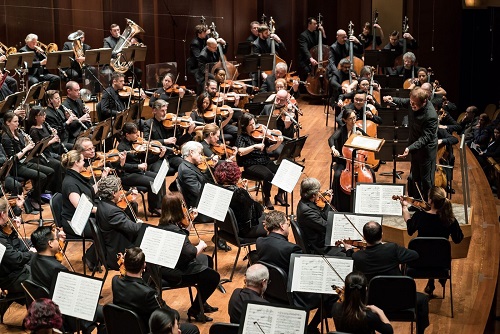 United States Sibelius, Britten: Seattle Symphony Orchestra / Ludovic Morlot (conductor), Benaroya Hall, Seattle, 22.3.2018. (ZC)
United States Sibelius, Britten: Seattle Symphony Orchestra / Ludovic Morlot (conductor), Benaroya Hall, Seattle, 22.3.2018. (ZC)

Sibelius – Oceanides
Britten – Four Sea Interludes and Passacaglia from Peter Grimes
Sibelius – Symphony No.2 in D major Op.43
For much of its most recent history, the Seattle Symphony has been associated with the music of Sibelius. The composer’s works were frequently performed by the orchestra during Gerard Schwarz’s tenure, and in 2015, Thomas Dausgaard drew on the orchestra’s familiarity with Sibelius’ idiom for performances of all seven symphonies, an experience that has stayed with me ever since. Ludovic Morlot, however, has mostly shied away from the Finnish composer, only occasionally featuring his works in concert.
But if last Thursday evening is any indication, Seattle audiences have been deprived. Sibelius’ Symphony No.2 was the program anchor, while the first half featured a duo of nautical-inspired works: more Sibelius — The Oceanides — and Britten’s Four Sea Interludes and Passacaglia from Peter Grimes. Britten’s operatic excerpts and this symphony are common enough in concert halls, but how Morlot would approach them was the the draw.
In The Oceanides, Sibelius uses the full orchestral palette to conjure images of nymphs of Greek mythology who inhabit the Mediterranean Sea. For this pulsating reading, Morlot’s comfort with French impressionism was an asset, as he guided the orchestra through the work’s layers.
Britten published his excerpts from his celebrated opera separately as concert works. More often than not, the four interludes, which form a scene-setting arc, are performed without the Passacaglia, but if it is included, it is sometimes tacked on to the end, almost as an afterthought. But Morlot chose to place the Passacaglia between ‘Moonlight’, which is third, and the finale ‘Storm’. Unlike the other interludes, which depict ocean imagery, the Passacaglia portrays growing tensions between the opera’s characters. Placed here, the movement’s innate complexity made an effective follow-up to the three extroverted movements, and girded the audience before the violent swirl of the concluding interlude. Susan Gulkis Assadi’s doleful rendering of the Passacaglia’s viola solos were a key part of that enhancement.
Sibelius’ Second Symphony sits at the crossroads of music history. During his lifetime the composer found himself in between traditionalists and modernists— often with one foot in each realm. His ability to conjure memorable themes from simple fragments and develop them over multiple movements, as well as lush orchestration, no doubt account for the work’s enduring popularity, and make welcome markers for listeners. Time and time again, the composer uses these components to create inviting, innovative music.
Shorn of excess, Morlot’s interpretation was a brisk, ear-opening experience. This was a different Sibelius, diverging significantly from the performance the orchestra gave under music director-designate Dausgaard. Most conductors present the Second as a Romantic masterpiece. Morlot, however, has always sought to draw attention to a work’s novelty, freeing it from any interpretative excesses that have accumulated over time. His rational pacing and attention to detail left me imaging the wonders that the conductor could coax from the composer’s other symphonies, and especially his neglected theater music. In any case, these thoughts only reflected one of the best performances from Morlot and the ensemble so far this season.
Zach Carstensen